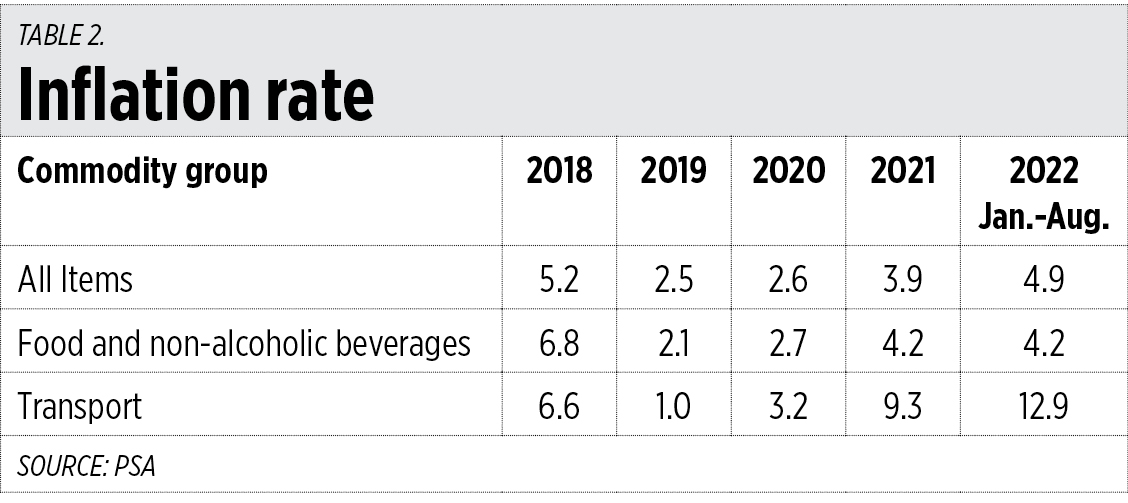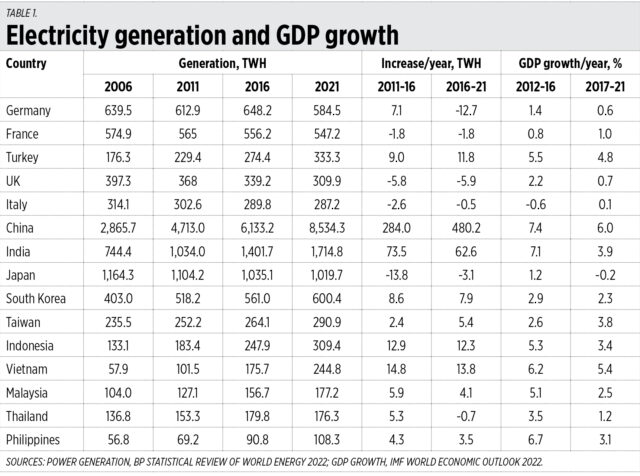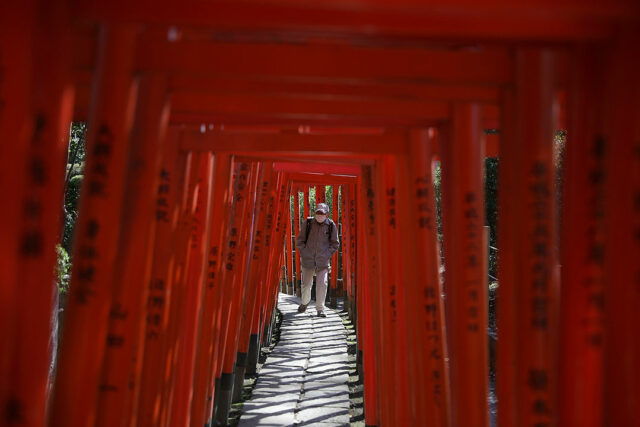Four important economic and business developments occurred last week that I want to comment on.
1. Philippine Economic Briefing, Singapore
Last Wednesday, Sept. 7, President Ferdinand Marcos, Jr. and his economic and infrastructure teams held the Philippine Economic Briefing (PEB) in Singapore, which was attended by many investors.
In Panel 1, the speakers were Finance Secretary Benjamin Diokno, Socio-Economic Secretary Arsenio Balisacan, Budget Secretary Amenah Pangandaman, Central Bank Governor Felipe Medalla, and SM Investment Corp. (SMIC) Vice-Chair Teresita Sy-Coson. The four officials spoke clearly about the macroeconomic and fiscal stability of the country. And it was a brilliant idea to have another speaker from Philippine business. Singapore businessmen know the Sy and SM conglomerate, and Ms. Coson spoke positively about the economic team and economic outlook of the Philippines. When the panel ended, there was loud applause in the conference room.
Panel 2 had Trade Secretary Alfredo Pascual, Public Works Secretary Manuel Bonoan, Transportation Secretary Jaime Bautista, Tourism Secretary Maria Esperanza Christina Garcia Frasco, and Information and Communications Technology Secretary Ivan John Uy. I would say it was another slam dunk — with “come and invest in the Philippines” messaging that was clearly and convincingly delivered. And since Singapore is the Regional Headquarters of many multinationals from the west, the message must have been echoed well.
A report in BusinessWorld about the Singapore event noted that, “Electric tricycle, floating solar projects top Singapore investment deals from Marcos visit” (Sept. 8).
Investment pledges after the PEB Singapore came to $6.5 billion. Of this, $5 billion would be for the manufacturing of electric tricycles and $1.2 billion for floating solar. This does not seem right. More e-tricycles mean more power demand and our power generation is low — only 108 terawatt-hours (TWH) in 2021, less than half of Vietnam’s 245 TWH. Solar or wind are not baseload power sources, their output and storage are intermittent and very unstable.
The Philippines should aim for an increase of at least 7 TWH/year in power generation from 2023-2025 versus an increase of only 3.5 TWH/year in 2016-2021, then at least 10 TWH/year more from 2026-2028, to avoid the frequent yellow-red alerts that we experienced until this year. Vietnam has increased its power generation over the last 10 years by 14-15 TWH/year. Big commercial and industrial projects will not come in if they see that they will face occasional blackouts and that they must buy and regularly run huge expensive gensets.
Big industrial countries like Germany, the UK, France and Japan have entered a deindustrialization and low growth phase as they shut down many of their fossil fuel and nuclear plants and rely more on intermittent wind-solar. In contrast, South East Asian countries keep humming with their conventional energy sources and experience fast growth (see Table 1).

2. The BOT law and new PPP Center head
Last week, the Public Private Partnership (PPP) Center announced a “Public Consultation on the Amendments to the 2022 Implementing Rules and Regulations (IRR) of the Build-Operate-Transfer (BOT) Law (RA 7718).” People can submit their comments in writing or they can also attend the face-to-face consultation tomorrow, Sept. 13.
President Ferdinand Marcos, Jr. has appointed a new PPP Center Executive Director, Cynthia Hernandez. The lady is very cerebral: she graduated from the Philippine Science High School, took the UP College Admissions Test (UPCAT) and landed in the top 50 out of about 80,000+ examinees nationwide, graduated BS Metallurgical Engineering from UP as an Oblation scholar, finished a Masters in Development Economics (MDE) from the UP School of Economics (UPSE), ongoing MSc Business Management at Berlin Professional School. She has worked in some big energy, infrastructure, and consulting companies in the country: Meralco, the Philippine National Oil Company (PNOC), the Power Sector Assets and Liabilities Management Corp. (PSALM), AES, Aboitiz Power, SGV/EY, and KPMG.
Meanwhile, Marilou “Louie” Mendoza was re-appointed as Chairperson of the Tariff Commission (TC). Louie is another cerebral official: she graduated AB Economics (cum laude) then MDE (university scholar) from UPSE, and with a Master in Development Management (with honors), and the National Government Career Executive Service Development Program.
Cynthia, Louie, Department of Budget and Management (DBM) Secretary Pangandaman, and DBM Undersecretary for Budget Policy and Strategy Joselito Basilio were classmates in MDE at the Program in Development Economics (PDE) batch 33 of UPSE. Mr. Basilio has another MS in Applied Economics from University of Michigan-Ann Arbor, then a PhD Economics from University of Illinois at Chicago, USA.
The PDE Program Director back then and a teacher for two semesters was Prof. Ruperto “Ruping” Alonzo. Prof. Ruping (RIP) molded these four bright minds plus their other batchmates.
3. Transport inflation and Grab-MOVE IT partnership
Last week, the Philippine Statistics Authority (PSA) said that August inflation was 6.3%, flat from July’s inflation rate of 6.4%. Among the commodity groups, Transport inflation was 14.6% in August, of which “Operation of personal transport equipment” was 34.7%. Inflation in the first eight months of 2022 is now 4.9% and transport inflation is 12.9% (see Table 2).

With continued high prices for gasoline and diesel, driving personal cars remains costly and people would wish to find alternative cheaper but safe transportation. Motorcycle taxis (MCT) should fall in this category — fast, cheap, no need for parking. But MCT remains a virtual duopoly by Angkas and Joyride. So, when Grab partnered with the smallest and weakest third player, MOVE IT, the duopoly was unhinged. See this report in BusinessWorld: “Grab Philippines’ acquisition of MOVE IT challenged by 4 groups” (Sept. 9).
Commuters and the public have one “vested” interest — more choices, more options. Transport companies, especially if they are a duopoly or oligopoly, have the opposite vested interest — reduce the options for commuters, get more money and power for themselves. This is exactly what the four transport groups and the duopoly are lobbying for.
Real commuter and consumer groups call for more options and competition. Fake commuter groups call for more bureaucratization and less competition. Last month this column’s piece, “Motorcycle taxis, illicit tobacco, and electric cooperatives” (Aug. 8), said “Transportation Secretary Jaime J. Bautista and LTFRB (Land Transportation Franchising and Regulatory Board) Chair Cheloy Velicaria-Garafil should consider removing two caps — remove the maximum number of MCT players from only three, and remove the maximum 15,000 drivers per player. At a maximum of 45,000 legal drivers, it is very likely that the number of unregistered “habal habal” drivers may be twice or more than that number nationwide. Since they are already existing, they should be onboarded via legal MCT companies, for better regulatory transparency and better passenger safety.”
At the PEB Singapore, Secretary Bautista discussed the planned big railway projects that will transport people and goods much faster. These should proceed. But many people do not live near train stations, they reside many kilometers away. More MCTs will transport people from their houses to train stations then to their destinations, and back.
Grab-MOVE IT as third player is a good move. A better move is to have four, five or more players. And no maximum number of riders per player. More competition, more options, and more protection for the riding public. The LTFRB should junk the lobby of the four groups and think of the needs of the riding public.
4. IPRI 2022
Finally, the International Property Rights Index (IPRI) 2022 was launched on Sept. 7 by the Property Rights Alliance (PRA, Washington DC).

The IPRI index is a composite for three sub-indices: legal and political environment, physical property, and intellectual property protection. The Philippines showed deterioration in the global ranking, from 70th in 2018 to 83rd in 2022, pulled down by low scores in legal and political sections due to poor performance in rule of law and control of corruption (see Table 3).
The Marcos Jr. administration must do more to strengthen the rule of law and control corruption in the country.
Bienvenido S. Oplas, Jr. is the president of Minimal Government Thinkers.
minimalgovernment@gmail.com














